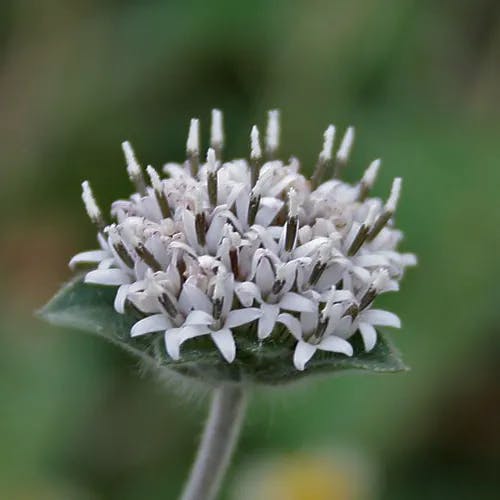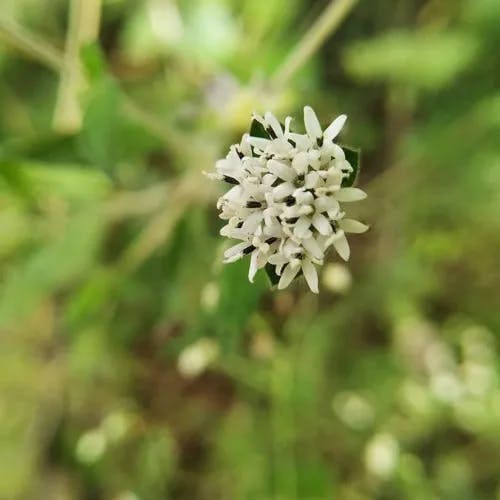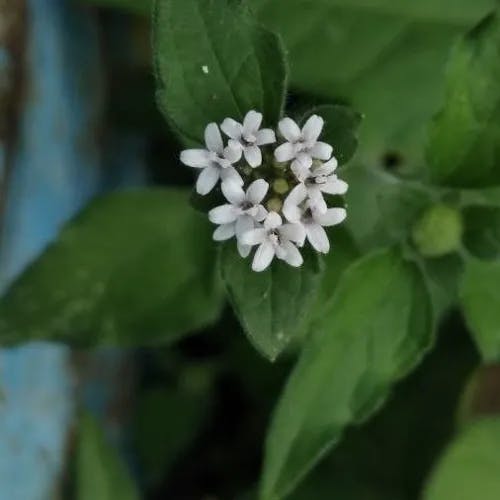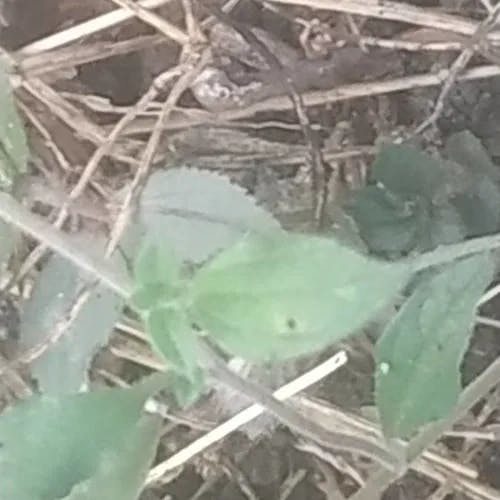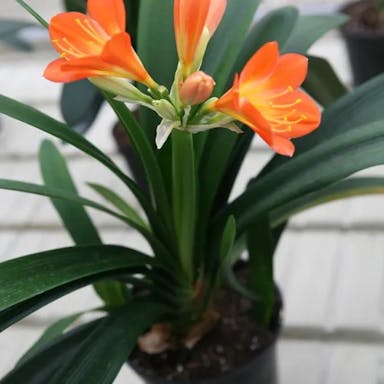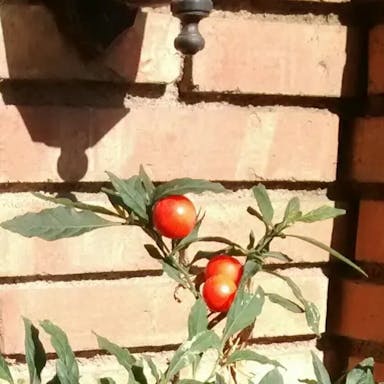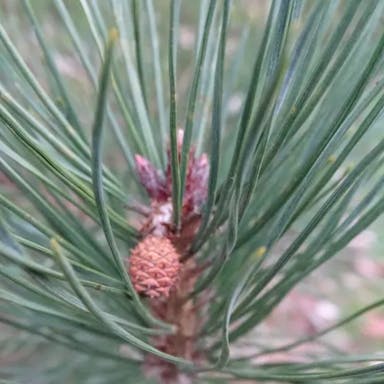The perennial plant Lagascea mollis has velvety gray-green leaves and produces clusters of small yellow flowers. Though little is known about its fruit, this Asteraceae species thrives in tropical areas of the Americas and is considered a low-maintenance landscape plant. Reaching just 1-2 feet tall, its soft hairy foliage provides pleasing texture while the cheerful blossoms add vibrant color. Lagascea does well in sun or part shade and is quite drought tolerant. With modest soil drainage needs and compact growth habit, Acuate can make an easy-care addition to gardens. Unfortunately research on the variety and fruiting traits of this species remains limited. Further study of Lagascea mollis promises to uncover more about its botany and potential uses.
Acuate
- Scientific name
- Lagascea mollis
Basic Information
- Asteraceae Family Lagascea Genus Acuate Species
- Asteraceae > Lagascea > Lagascea mollis
- 75%
- The Completeness of This Encyclopedia
Please help us complete the encyclopedia, Terrarium is a encyclopedia service to be completed with everyone in the world. Currently, this page is 75% complete. For more information on how to contribute, please click here.
- Height
- Flower Color
- Leaf Color
- Anthesis
- Sunlight Exposure
Full Sun Long hours of sunlight from morning to afternoon Partial Shade A location in the shade of a tree or where either the morning or afternoon is shaded Full Shade A place where there is no direct sunlight
- Hardiness Zones
This is an indicator to know to which zone each plant can winter. Knowing the zone of each plant gives you an idea of the cold temperature resistance when grown in the ground without a roof. 2: -42.7 to -40.0 3: -39.9 to -34.4 4: -34.3 to -28.9 5: -28.8 to -23.3 6: -23.2 to -17.8 7: -17.7 to -12.2 8: -12.1 to -6.7 9: -6.6 to -1.1 10: -1.0 to 4.4 11: 4.5 to 10.0
- Cold resistance
- Heat resistance
- Habitat of origin
- Growth Rate
What is Acuate (Lagascea mollis)?
What is Acuate (Lagascea mollis)
Flower meaning
NO DATA
Calendar of Acuate (Lagascea mollis)
Calendar
In the month of April, a flowering plant species known as Acuate reaches peak bloom across the United States. Its flowers are most vibrant during this time, lasting approximately 14 to 21 days prior to fading. To potentially extend the flowering duration, gardeners may prune spent blooms and situate the plant where ample sunlight and hydration are accessible. Exact flowering periods vary pending precise geographic site. For particulars, consult reference books or local plant specialists.
How to grow Acuate (Lagascea mollis)
Watering
The plant species Acuate flourishes with a particular watering routine. Its perfect watering frequency during the growing season of spring to early fall is one time every seven days. Keeping the soil dampness at around 60% is vital, achievable by watering one liter per square meter of soil. However, during the dormant season of late fall and winter, reduce watering to one time every fourteen days. Lower the soil dampness to about 40% for the plant's slower metabolism. Note overwatering can cause root rot while underwatering leads to dehydration and stunted growth. To ensure optimal health, regularly check soil moisture and adapt the watering plan accordingly. Following these guidelines helps Acuate thrive fully.
Soil and Fertilizer
The plant Acuate thrives when the dirt it grows in drains well and has a pH level ranging from 6.0 to 7.5. It prefers soil abundant in decayed organic material with great water-retention to properly moisten the plant. To feed the plant best, use a balanced fertilizer in a 10-10-10 nitrogen, phosphorus, potassium ratio. Give this plant food during its growing time in spring and summer. How much fertilizer depends on the plant's size and age. For small, young plants use a tablespoon every two months. Bigger, mature plants may need up to half a cup every three months. Carefully spread the fertilizer around the plant's base without getting any on the stems or leaves. Once spread, lightly mix it into the topsoil and water thoroughly so the roots absorb it. Checking the soil pH and nutrients regularly with a test helps know if the fertilizer needs adjusting. In summary, proper drainage, pH balance, and fertilizing at the correct time and amount helps this plant grow strong.
Sunlight and Place
Acuate is tolerant of moderate coldness, making it appropriate for areas with mild to moderate winter temperatures. It can bear heat up to -5°C (23°F) without significant destruction. However, it is not well-suited for very cold climates where temperatures regularly fall below freezing. For drought tolerance, Acuate is somewhat persistent and can bear high heat up to 35°C (95°F). It is crucial to note that long contact to extreme heat can cause anxiety and impairment to the bush, so giving some shadow during the hottest part of the day is recommended. Acuate flourishes in full sunshine, needing at least 6-8 hours of direct daylight per day for optimal growth. It is not well-suited for shadowy or partially shadowy areas as it may become spindly and feeble. During the summer, it is vital to supply adequate water and ensure appropriate drainage to prevent waterlogged land. In winter, Acuate can be moved indoors in colder climates or safeguarded with mulch and frost covers in milder regions.
Advanced Information of Acuate (Lagascea mollis)
Pruning
At regular intervals, the woody perennial flowering plant known as Acuate requires cutting and trimming for assorted rationales. Pruning maintains desired shape, encourages vigorous increase, and takes away expired or sick branches. Additionally, it regulates extent and blocks excessive increase. Cutting back boosts novel sprouting and overall energy. Optimal occasion for pruning is the dormant season in late winter or initial springtime when stress and impairment risk are lowest. Utilize sharp, sanitized tools for neat cuts and infection avoidance. Post-prune, clear out debris and dropped foliage to prevent spread of illness. Mulch round the base retains moisture and contributes nutrients. Consistent monitoring of development and fitness identifies extra pruning and cutting requirements.
Planting and Harvest
The forest dwelling Acuate greatly appreciates a container of sufficient drainage. When initially housing the Acuate, mix the soil thoroughly and pack lightly, leaving area for root development. Gently remove from prior housing, keeping the root system intact. Set in new container at original level, fill remaining space with prepared soil. Hydrate thoroughly then permit excess to drain away. Annually replant in progressively larger container. Neglect can induce ailing of the Acuate. Appropriate sunlight exposure, routine hydration without saturation, and occasional feeding promotes vitality.
Propagation
Seeding, dividing, cutting and leaf segmenting are methods by which Acuate reproduction can be achieved. Culminate mature seeds from the fauna, then inter them within soil endowed with satisfactory drainage. Retain damp soil and administer filtered sunlight. Carefully rend the being into minor divisions, each equipped with roots affixed. Embed these sections in distinct containers boasting well-drained terrain and routinely hydrate. Excerpt stem pieces from the lifeform, eliminating basal leaves. Immerse the severed extremity in rooting endocrine then situate in moist soil. Preserve constant humidity and administer indirect light. Position a robust leaf inside damp earth, embedding the foundation. Maintain moist terrain and administer filtered light. Reaping can progress once the multiplied organisms have established roots and exhibit salubrious maturation.
Pests and Diseases
The plant species known as Acuate is vulnerable to an assortment of infestations and sicknesses. One prevalent irritant that affects Acuate is insects. These miniature creepy crawlies bolster on the sap of the plant, causing inadequate development and staining of leaves. To forestall insect pervasion, ordinary investigation and early identification are significant. Natural control techniques, for example, cleanser arrangements or neem oil can be utilized. Another irritant that presents a danger to Acuate is arachnids. These small arachnids draw the plant's juices, prompting staining and webbing on the leaves. Keeping up with legitimate mugginess levels and routinely splashing the plant with water can assist with forestalling arachnid parasite pervasion. In serious cases, miticides might be important. Acuate is additionally defenseless against contagious sicknesses like powdery buildup. This infection shows up as a white powdery covering on the leaves, stems, and blossoms, hindering photosynthesis and causing leaf drop. To forestall powdery shape, it is significant to give great air flow and try not to overhead watering. Fungicides containing sulfur or potassium bicarbonate can be utilized as a control measure. Root decay is one more worry for Acuate. This sickness is brought about by overwatering or ineffectively depleted soil, prompting the rot of the plant's foundations. To forestall root decay, it is basic to guarantee appropriate seepage and stay away from overwatering. Fungicides might be utilized in serious cases, yet avoidance is key.
Habitat of Acuate (Lagascea mollis)
Habitat
Toxicity of Acuate (Lagascea mollis)
Health Benefits
- edible
- Unknown
- Toxic
- Unknown
NO DATA
Toxic for dogs and cats
NO DATA
Q&A of Acuate (Lagascea mollis)
- Is there a recommended way to choose Lagascea mollis?
Before decision of choices regarding seeds or young seedlings of Acuate, it is prudent to analyze and study carefully. Contrast Between spreading or vertical or upward pointing form must be pondered. Coloration alternatives exist between bright golden petals or deeper purple blooms. Review smoothness, plumpness, sickness absence when choosing seed stockpiles. Weak stems or unhealthy leaves show poor health so best avoided. Personal desires shape ultimate choice.
